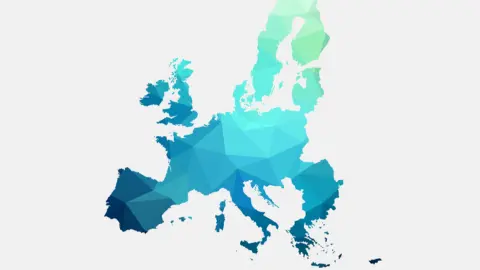Key events in developed markets next week
In the US, the focus remains on jobless claims, which show a truly alarming rate of unemployment. European finance ministers meet again to discuss a way forward while in the UK, we should have the first real insight into the economic impact of the coronavirus, which is likely to be both larger and much more rapid than that of the Global Financial Crisis
US: Attention turns from jobless claims to unemployment numbers
Up until last week, the only US economic report worth watching was the weekly jobless claims. However, we have now started to see other data in the form of retail sales and manufacturing, and the trend of bad numbers will likely continue in the coming week.
Jobless claims should slow (maybe to 3.5-4 million) as the initial reaction to shutdowns starts to fade, but unemployment is still rising at a truly alarming rate. This leads us to believe that the April employment report will show that all the jobs created since the Global Financial Crisis will have been lost within just two months. Unemployment itself is likely to rise well above 15% by May and given any re-opening is likely to be staggered, with social distancing remaining a key theme, it will be slow to fall back.
The devastation in the labour market will continue to weigh on (University of Michigan) confidence although the recent rebound in equities may help stem the bleeding. Durable goods orders will plunge though, given the horrible manufacturing data and the devastation in the oil and gas sector caused by collapsing prices and the steep declines in commodity prices. With spare capacity growing by the day, the need for capex has been dramatically reduced and will prompt much lower durable goods orders. This narrative remains consistent with our GDP growth forecast of -6% annualised for 1Q20 and -40% annualised for 2Q20.
Eurozone: Looking out for survey indicators
Next week brings the April update of the eurozone survey indicators and it’s probably best to sit down for these numbers. The March data for consumer confidence and the PMI were already dismal, but those surveys were still conducted before the most severe restrictions were introduced in most countries. April is therefore expected to come in worse still and will probably give a fairer comparison between countries. Also look out for the Eurosummit next week, which continues the Eurogroup discussion on an EU fund to boost the recovery. The question of funding will be particularly key here – will Eurobonds see the light of day after all? It would be a huge surprise if that were the outcome of next week’s meeting.
UK data to give first real insight into post-lockdown economic hit
There’s little doubt that the scale of the economic impact of the coronavirus in the UK is likely to be both larger, and much more rapid, than that of the Global Financial Crisis. That’s likely to be the theme of next week’s UK retail sales figures, which we expect to fall by around 10%, although clearly the figure could be much larger based on other spending indicators already available. Likewise, the PMIs will point to a steep decline in activity.
But the bigger question now is what the recovery will look like – and that will depend on two things. Firstly, how successful the lockdown unwinding process is – and whether testing can be stepped up quickly enough to help manage future outbreaks without having to use to strict shutdowns again. Secondly, the success of government fiscal measures. These have undoubtedly been bold, although there are teething problems – most visibly with the loan guarantee schemes for small businesses. Firms are likely to begin receiving funds from the government’s job retention scheme over the next week or so, which should help shore up cashflow.
But with some firms unfortunately unlikely to emerge from the crisis in the same shape as before, we think the overall economic recovery will be a gradual one and we don’t expect the size of the UK economy to reach its pre-virus size until 2022 or later.
This publication has been prepared by ING solely for information purposes irrespective of a particular user's means, financial situation or investment objectives. The information does not constitute investment recommendation, and nor is it investment, legal or tax advice or an offer or solicitation to purchase or sell any financial instrument. Read more
Download
Download article
17 April 2020
Our view on next week’s key events This bundle contains 3 Articles




